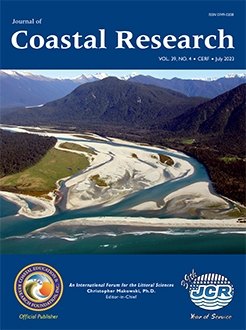Fuentes-Agueda, S.A.; Gallegos, M.E.; Mandujano, M.C., and Golubov, J., 2023. Contrasting growth and establishment of Thalassia testudinum along a cover gradient in the Gulf of Mexico. Journal of Coastal Research, 39(4), 653–662. Charlotte (North Carolina), ISSN 0749-0208.
Seagrasses are important for coastal ecosystem health and have significant economic benefits; however, they are undergoing important negative changes worldwide. The seagrass Thalassia testudinum comprises one of the main elements in submerged aquatic vegetation (SAV) habitats, and it grows in monospecific and mixed meadows along the continental shelf of the Gulf of Mexico. In this study, T. testudinum monospecific and mixed meadows were monitored over a 2 year period to identify the abiotic and biotic conditions that may correlate with population parameters through the plastochron index (PI). Plants found in monospecific meadows had larger rhizomes and more flowers in comparison to those in mixed meadows, while the latter produced more leaves and larger shoots. The annual rate of change in biomass (Br) of T. testudinum in the monospecific meadow was 1.15 ± 0.03, which was slightly higher than that in the mixed meadow, with a value of 1.12 ± 0.03. T. testudinum in monospecific meadows tended to exhibit increased sexual reproduction, while vegetative growth and clonal reproduction were more common in mixed meadows. The results highlight that T. testudinum life-history strategies and establishment are affected by both biotic and abiotic factors like depth, temperature, and water nutrients.





